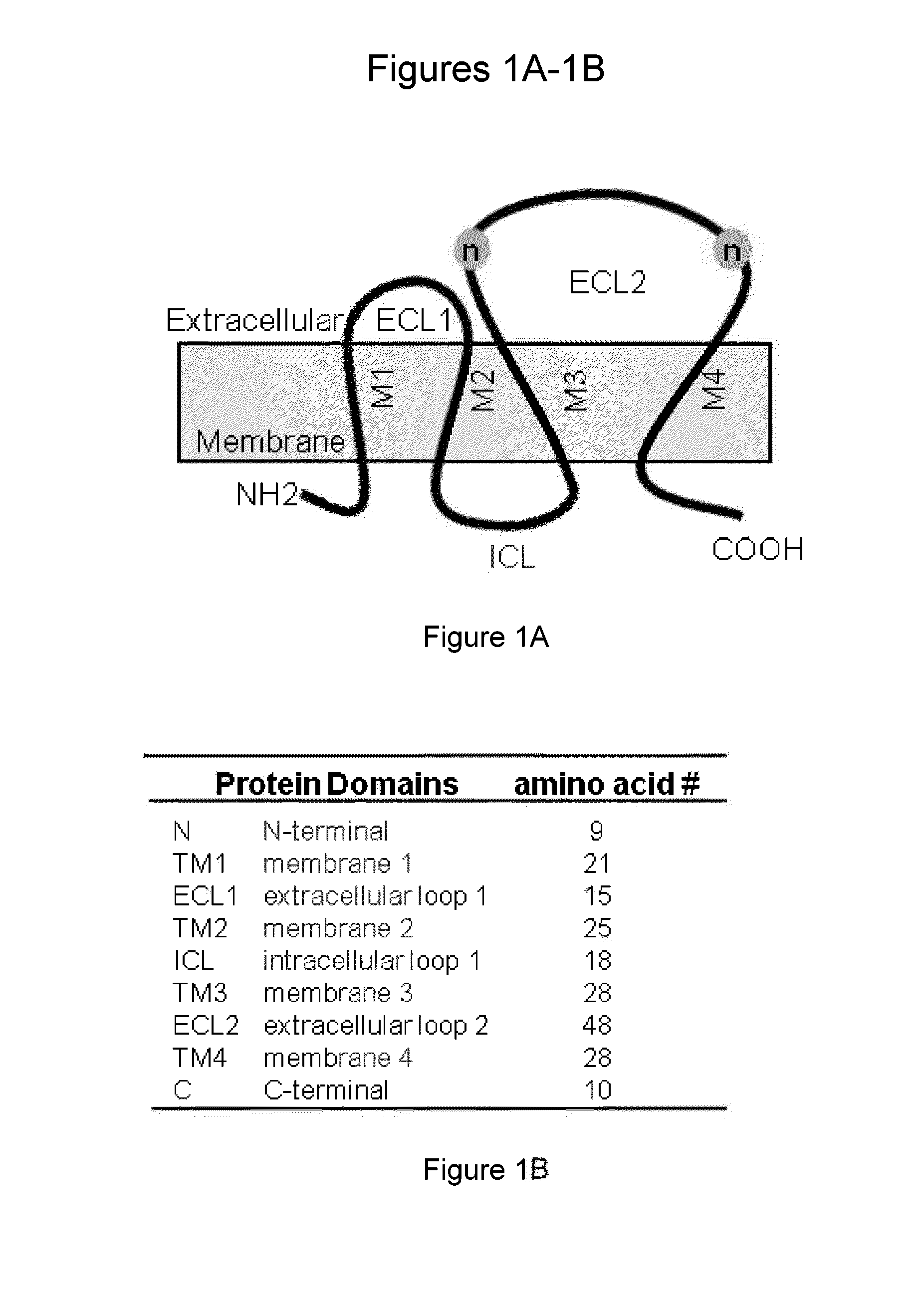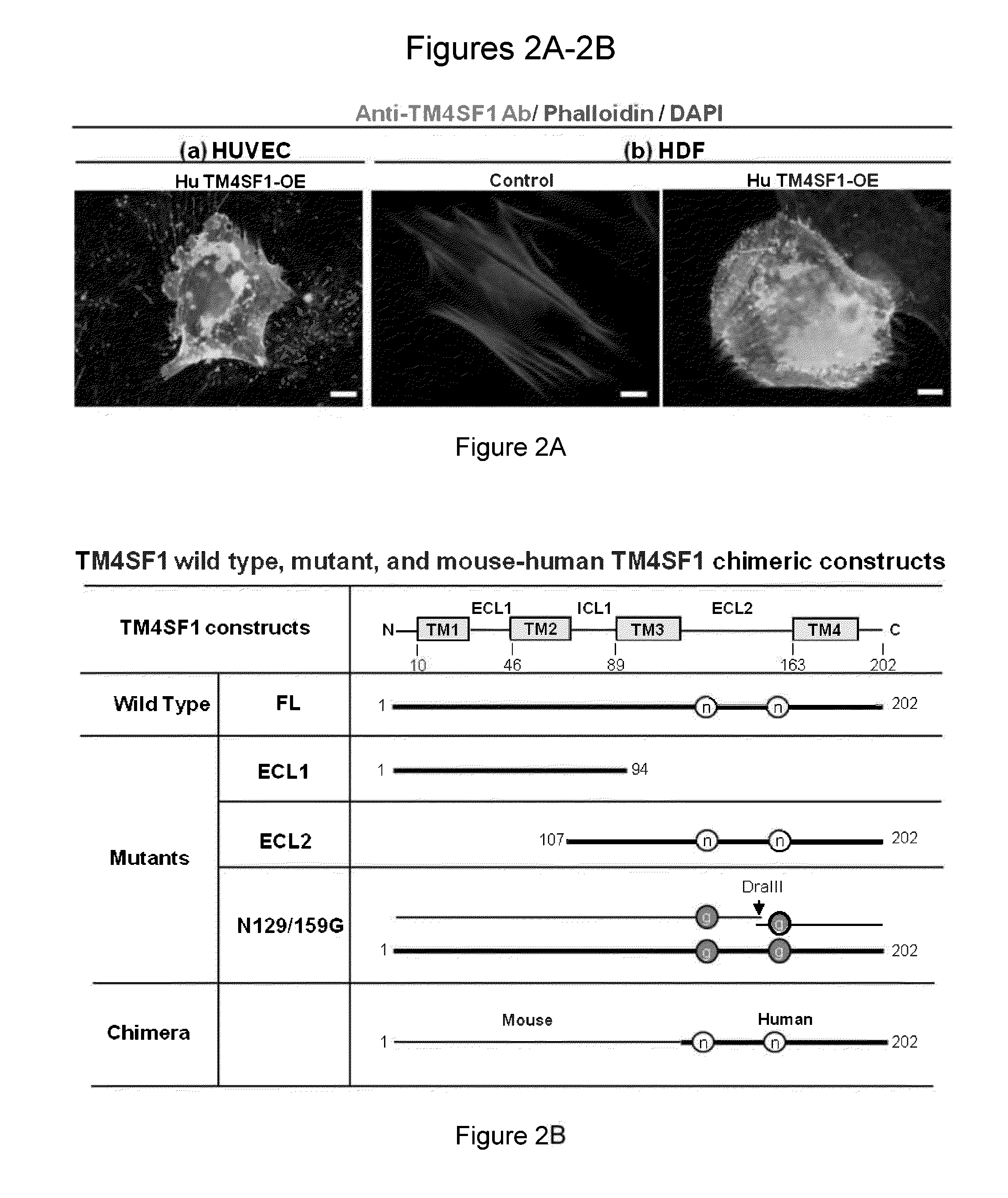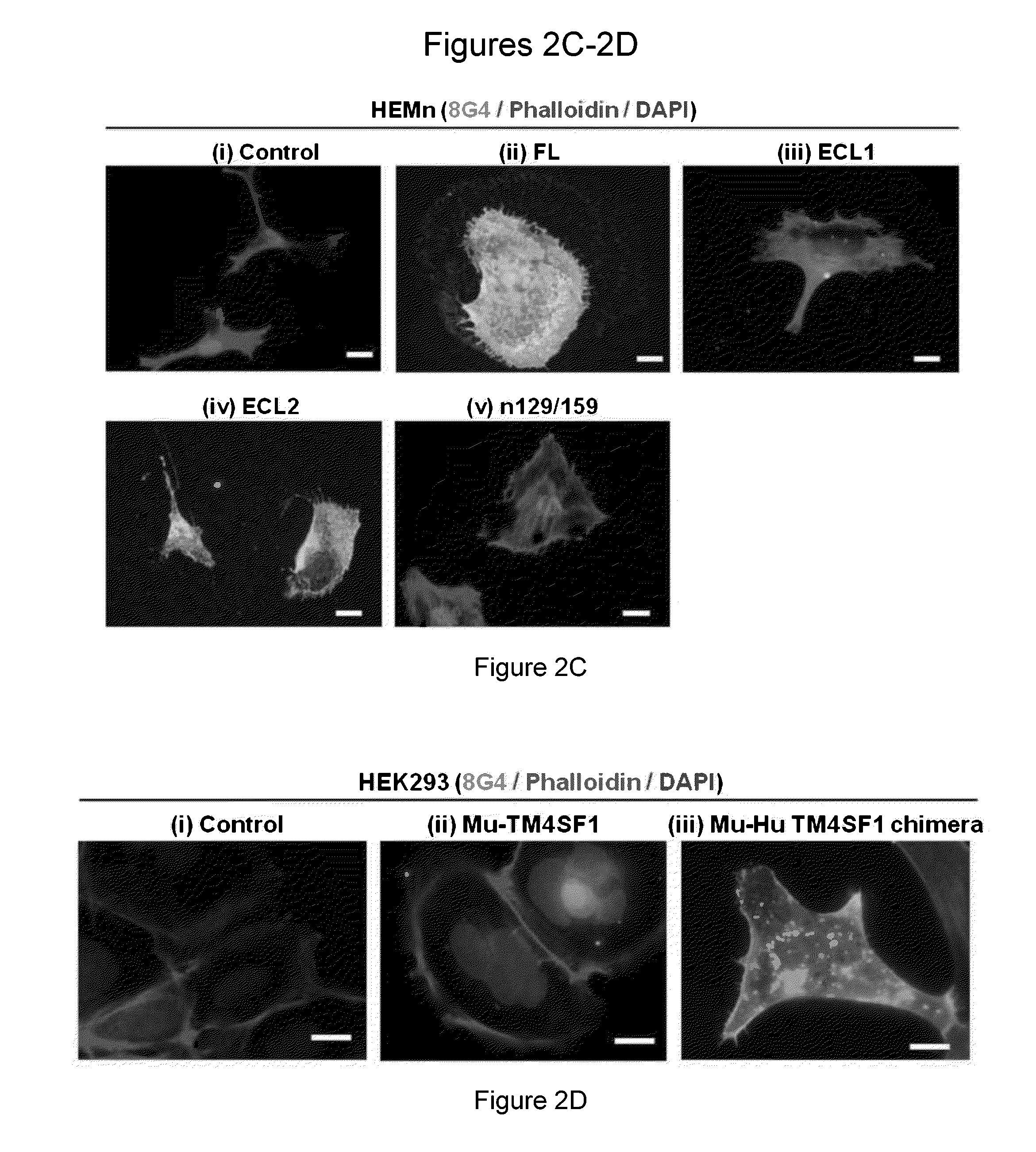Tm4sf1 binding proteins and methods of using same
a technology of tm4sf1 and binding proteins, applied in the field of tm4sf1 binding proteins, can solve problems such as rate-limiting steps, and achieve the effect of slow release of composition
- Summary
- Abstract
- Description
- Claims
- Application Information
AI Technical Summary
Benefits of technology
Problems solved by technology
Method used
Image
Examples
example 1
Materials and Methods
Preparation of Monoclonal Antibodies Against TM4SF1
[0180]Human umbilical vein endothelial cells (HUVECs) were cultured in EGM2-MV complete medium (Lonza, Walkersville, Md.) and used at passage 3-6. HUVECs were transduced to overexpress (OE) human TM4SF1 at levels of ˜400 mRNA copies / cell (˜4× that of native HUVEC) (Shih et al. Cancer Res. 69: 3272-3277, 2009; Zukauskas et al. Angiogenesis. 14: 345-354, 2011). 107 TM4SF1 OE cells were injected intraperitoneally into female six-week-old Balb-c mice at 2 week intervals ×5. TM4SF1 structure is depicted in FIG. 1. Hybridoma screening steps and epitope mapping strategies are described below and depicted at FIG. 2. Fifteen stable clones were derived. Of these, thirteen recognized epitopes in extracellular loop-2 (ECL2) and two in intracellular domains, based on their reactivity with mutant forms of TM4SF1 (FIGS. 2B-2E). None of the clones directed against human ECL2 reacted with mouse TM4SF1, likely because of signific...
example 2
The Anti-TM4SF1 Antibody 8G4
[0183]Hybridoma screening and epitope mapping strategies are described in FIG. 2. Of the antibodies directed against an epitope on ECL2 (FIGS. 1A and 1B), 8G4 was selected for detailed study because of its high avidity (Kd ˜1 nM).
[0184]The 8G4 antibody was deposited by way of its producing hybridoma, hybridoma mouse cell line 8G4-5-13-13F, with the American Type Culture Collection®, PO Box 1549, Manassas, Va., 20108, USA (ATCC®):
Cell LinesATCC® Accession No.Deposit DateHybridoma mousePTA-120523Jul. 31, 2013Cell line 8G4-5-13-13F
[0185]The deposit was made under the provisions of the Budapest Treaty on the International Recognition of the Deposit of Microorganisms for the Purpose of Patent Procedure and the Regulations thereunder (Budapest Treaty). This assures maintenance of a viable deposit for 30 years from the date of deposit. The cell line will be made available by ATCC under the terms of the Budapest Treaty, and subject to an agreement between Beth Is...
example 3
8G4 and the Subcellular Distribution of TM4SF1 in HUVEC
[0187]8G4 stained TM4SF1 in HUVEC (FIGS. 3A-3C) and other cultured endothelial cells (ECs) in intermittent, TM4SF1-enriched domains (TMED) on plasma membrane and nanopodia, and in perinuclear and nuclear deposits. Immunocytochemistry demonstrated that TM4SF1 was extracted by Triton-X100; membrane-associated staining was more greatly affected than that of perinuclear and nuclear deposits (FIG. 3D). TM4SF1 is thought to arise from two transcriptional variants with potential alternative sites for initiation of protein translation, generating isoforms of 28-, 25- and 22-kD (Zukauskas et al. Angiogenesis. 14: 345-354, 2011). Immunoblots demonstrated that all three bands were largely extracted by 0.05% but not by 0.01% Triton X-100 (FIG. 3E). Additional extraction with 0.1% Triton eluted residual 28-kD band. The 28-kD band (black arrow) was predominant in the soluble nuclear fraction and present exclusively in cytoskeleton and nuclear...
PUM
| Property | Measurement | Unit |
|---|---|---|
| Fraction | aaaaa | aaaaa |
| Fraction | aaaaa | aaaaa |
| Molar density | aaaaa | aaaaa |
Abstract
Description
Claims
Application Information
 Login to View More
Login to View More - R&D
- Intellectual Property
- Life Sciences
- Materials
- Tech Scout
- Unparalleled Data Quality
- Higher Quality Content
- 60% Fewer Hallucinations
Browse by: Latest US Patents, China's latest patents, Technical Efficacy Thesaurus, Application Domain, Technology Topic, Popular Technical Reports.
© 2025 PatSnap. All rights reserved.Legal|Privacy policy|Modern Slavery Act Transparency Statement|Sitemap|About US| Contact US: help@patsnap.com



